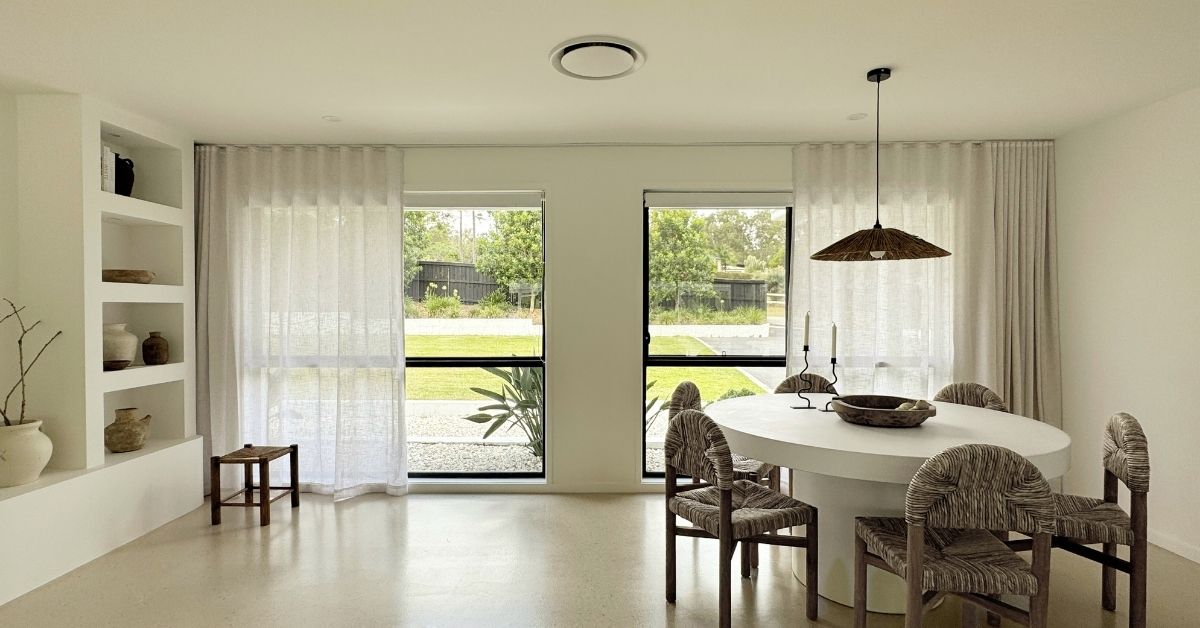
Key Takeaways:
- Understanding how modern roof design incorporates sustainability and aesthetics.
- The importance of energy-efficient materials in contemporary roofing.
Introduction to Modern Roof Design
In today’s architectural landscape, roof design transforms remarkably, blending functionality with stylish aesthetics. The contemporary approach to roof construction is being shaped by pressing factors such as climate change, the need for energy efficiency, and evolving style preferences. Modern resources, like the best roofers in Tulsa, are at the forefront of this transformation, offering homeowners expert guidance on selecting innovative materials that harmonize with both practical needs and aesthetic desires. This comprehensive understanding meets current demands and anticipates future trends in sustainable and functional roof design.
The Rise of Eco-Friendly Roofing Materials
Sustainable materials are becoming a cornerstone of modern roofing solutions. As environmental concerns rise, products like recycled shingles, solar tiles, and green roofs are increasingly popular among eco-conscious homeowners. These materials offer considerable environmental benefits, such as reducing waste and incorporating energy-saving technologies. Beyond their ecological appeal, these materials often enhance the energy efficiency of a home’s roofing system. For instance, solar tiles defend against the elements and contribute to household energy needs by converting sunlight into electricity, thus epitomizing the dual purpose of style and sustainability.
Energy Efficiency in Roof Design
With rising energy prices, the need for energy-efficient roofing is increasing rapidly. Cool roofs, recognized for their capacity to reflect additional sunlight and capture less heat, stand out especially in this scenario. These roofs significantly reduce energy bills by cutting down on cooling requirements. Aligning with insights from the U.S. Department of Energy, homes with relaxed roofs experience decreased cooling needs and a marked improvement in energy efficiency. This reduces dependence on artificial cooling methods, lowering carbon footprints and yielding long-term economic savings. Hence, energy-efficient roofing solutions are not merely trends; they represent intelligent, sustainable choices for the future of home design.
Aesthetic Trends Shaping Roof Design
A broad spectrum of cultural inputs and technological advancements is influencing the aesthetic dimension of modern roof design. Homeowners now enjoy an array of choices, ranging from minimalist styles characterized by clean lines to intricate patterns and vibrant colors. These choices enhance a building’s curb appeal and add distinctive character to entire neighborhoods, potentially increasing property values in the process. Furthermore, incorporating cutting-edge materials and designs enables homeowners to reflect their tastes while enhancing functionality, illustrating the seamless fusion of form and function in contemporary roof artistry.
Impact of Climate on Roofing Choices
Climate considerations are paramount in identifying suitable roofing options. In regions prone to heavy snowfall, sloped roofs are traditionally favored to prevent snow accumulation, thereby reducing structural stress and potential leaks. Conversely, areas with high sun exposure might opt for reflective surfaces to mitigate heat absorption, keeping indoor temperatures cooler. By adapting roof designs and materials to specific local weather conditions, homeowners can enhance their roofs’ durability and efficiency, ultimately extending their lifespan and minimizing maintenance needs.
Adaptations in Design
Design adaptations tailored to climate conditions are not just about ensuring safety; they are also integral to optimizing indoor comfort and reducing long-term maintenance costs. For example, homes in storm-prone regions might benefit from metal roofing, which offers both durability and modern appeal. Alternatively, clay tiles could be ideal in hot, arid locations due to their exceptional heat resistance. Such strategic adaptations exemplify how thoughtful design can preemptively address environmental challenges.
Roofing Innovations and Technology
Technological advancements are breathing new life into the roofing industry, redefining the possibilities for what a roof can accomplish. Today’s innovations include bright roofs, which integrate cutting-edge technology for enhanced functionality alongside advanced insulation techniques designed to improve energy efficiency. The roofing innovations align with the overarching trend of smart homes, where convenience, sustainability, and enhanced living experiences are prioritized. By incorporating sensors that monitor weather changes or automated systems to regulate temperature and lighting, bright roofs signify a move towards intelligent living environments.
Smart Roofing Systems
Innovative roofing systems offer unprecedented control over home energy consumption and environmental conditions. Features such as solar panel integration, weather sensors, and automated ventilation controls empower homeowners to manage their energy use proactively. This not only fosters energy efficiency but also enhances comfort and contributes to reducing residences’ overall carbon footprint.
Cost Considerations in Modern Roof Design
While roofing costs vary considerably based on materials and design complexity, new trends show that many homeowners are willing to invest in quality upfront for long-term gains. Materials like solar panels and green roofs may have a higher initial cost. Still, their benefits in terms of longevity, durability, and energy savings often lead to cost advantages over time. Thus, determining a cost-effective roofing solution involves balancing initial expenses with potential long-term savings and environmental impacts.
Conclusion and Future Outlook
As roofing continues to evolve, the focus remains steadfast on integrating technology, aesthetics, and sustainability into home designs. Homeowners and builders increasingly favor choices that offer tangible long-term benefits, both economically and in terms of living quality and environmental stewardship. As the market continues to develop innovative materials and cutting-edge designs, the future of roof design promises an exciting array of possibilities that will continue to redefine actionable sustainability within the built environment.




